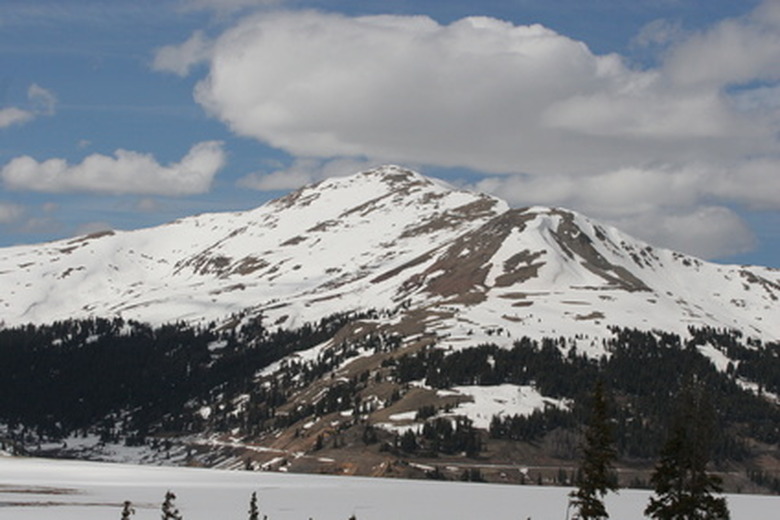Mountain & Ice Region Facts
Mountains and ice are found all over the world. Mountains vary from abruptly culminating peaks forming impressive ranges in the Alps to low, icy planes like those found around the Arctic Circle.
Mountains and ice caps have diverse biomes owing to high altitude and proximity to polar regions.
Mountain Biome Facts
Mountain Biome Facts
Mountain biomes have diverse ecosystems, subcategorized depending on the microclimate and elevation of the landform. Mountain biomes vary from lush tropical forests to deserts and ice cap regions.
One can traverse many different biomes while walking up a mountain, starting with grasslands, to forests and ending up in a tundra depending on the elevation of the mountain.
Alpine Definition
Alpine Definition
**Alpine tundra is found on most continents.** The starting point of the Alpine tundra varies depending on the geographic location. It is estimated that for every 3,280 feet (1,000 meters) gained, the temperature drops about 17.7 degrees Fahrenheit (approximately 10 degrees Celsius).
The harsh conditions and higher elevation of alpine tundras contribute to the lack of vegetation found in these areas. Alpine weather tends to be cold, windy and dry.
Icy vs. Tropical Mountains
Icy vs. Tropical Mountains
**Mountains, by definition, are a landmass with an elevation of over 1,000 feet (about 304 meters) over its surroundings.** Depending on the geographical location of these mountains, the climate will differ drastically. In the polar regions and on very high-altitude mountains, snow is permanently found on the peaks.
Tropical mountains contain the highest biodiversity of any ecosystem in the world. On the other side of the spectrum, icy mountain climates are so cold and arid that very little life can thrive on this frozen land. Despite all the water, icy mountains are dry like deserts because the ice makes water unavailable for plants.
The ice also reduces plants' access to the nutrient-rich soil.
The Highest Mountains
The Highest Mountains
Thirty of the world's highest mountains in the world can be found in the Himalayas. The highest mountain in the world is Mount Everest, which reaches 29,035 feet (8,850 meters) above sea level. The freezing conditions, everlasting snow and glaciers that cover the slope create a very hostile environment for any life on Mount Everest.
Although Mount Everest may be the highest mountain on Earth, the tallest is actually Mauna Kea, a volcano in Hawaii. It measures 33,474 feet (10,203 meters) from top to bottom but only summits at 13,796 feet (4,205 meters) above sea level. Despite the tropical island location of Mauna Kea, the conditions at the summit can also be very harsh and occasionally snowy.
Ice Caps vs. Glaciers
Ice Caps vs. Glaciers
While ice caps will be covered with glaciers, not all glaciers are found on ice caps. The largest icy region in the world is the Arctic, a vast expanse of ice north of the Arctic Circle. Interestingly, the Arctic is only made of ice; in 1958 a submarine proved this theory by traveling under it.
Ice caps and ice sheets are vast expanses of land created from layers of glacial ice spreading out and forming a dense layer of icy terrain. Glaciers larger than 19,000 square miles (50,000 square kilometers) are called ice sheets. Smaller glaciers also form on the sides of mountains in high-altitude snowy regions but are not considered ice caps.
Glacier Facts
Glacier Facts
Glacier ice can be hundreds of thousands of years old. Antarctica may hold glacier ice that is up to a million years old. Studying their icy cores helps scientists discover past climate trends in Earth. Many of the glaciers around today were formed during the last mini ice age between the 14th and 19th centuries.
In mountainous regions, glacier breaks also occur, shattering the frozen rocks beneath the ice. The movement and melting of glaciers have since changed mountain topography. Glaciers are responsible for creating steep mountainous ridges, valleys and moraines.
The Arctic ice sheet is created from years of accumulated snowfalls and sub-zero temperatures. Snowflakes packing down and forming icy layers have given way to glacier formations that now cover the entire Arctic ice cap.
This frozen sheet is continually moving from the rising of the ocean and external environmental conditions. Glaciers moving in the Arctic Circle will eventually reach the frozen coasts then break off and become giant icebergs.
References
- Blue Planet Biomes: Alpine Biome
- Encyclopaedia Britannica: Mountain Ecosystem
- National Geographic: Mountains
- ThoughtCo: Life at High Elevation
- ThoughtCo: What You Need to Know About Biomes
- Encyclopaedia Britannica: Mount Everest
- Encyclopaedia Britannica: Tundra
- Blue Planet Biomes: Tundra Biome
- National Geographic: 10 Brrr-illiant Glacier Facts!
- National Geographic: Glacier
- National Snow & Ice Data Center: All About Glaciers
- National Geographic: Ice Cap
- My Colorado Parks: Temperatures Change as You Go Higher in Elevation
- USGS: How Old Is Glacier Ice?
Cite This Article
MLA
Jerrett, Adrianne. "Mountain & Ice Region Facts" sciencing.com, https://www.sciencing.com/mountain-ice-region-7315370/. 22 November 2019.
APA
Jerrett, Adrianne. (2019, November 22). Mountain & Ice Region Facts. sciencing.com. Retrieved from https://www.sciencing.com/mountain-ice-region-7315370/
Chicago
Jerrett, Adrianne. Mountain & Ice Region Facts last modified August 30, 2022. https://www.sciencing.com/mountain-ice-region-7315370/
